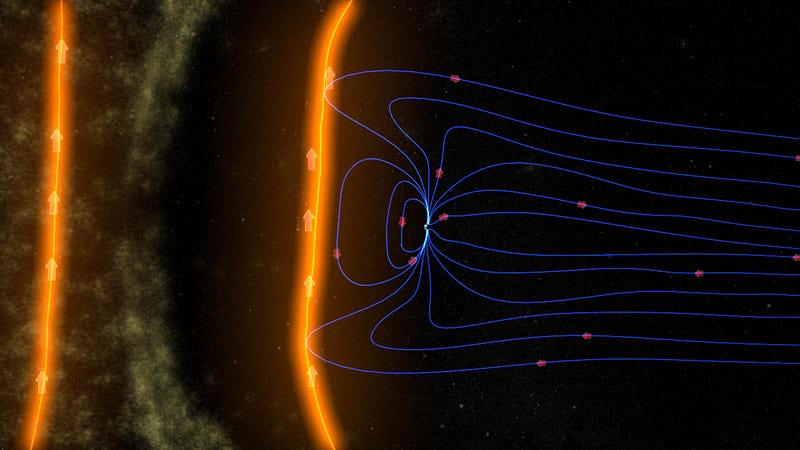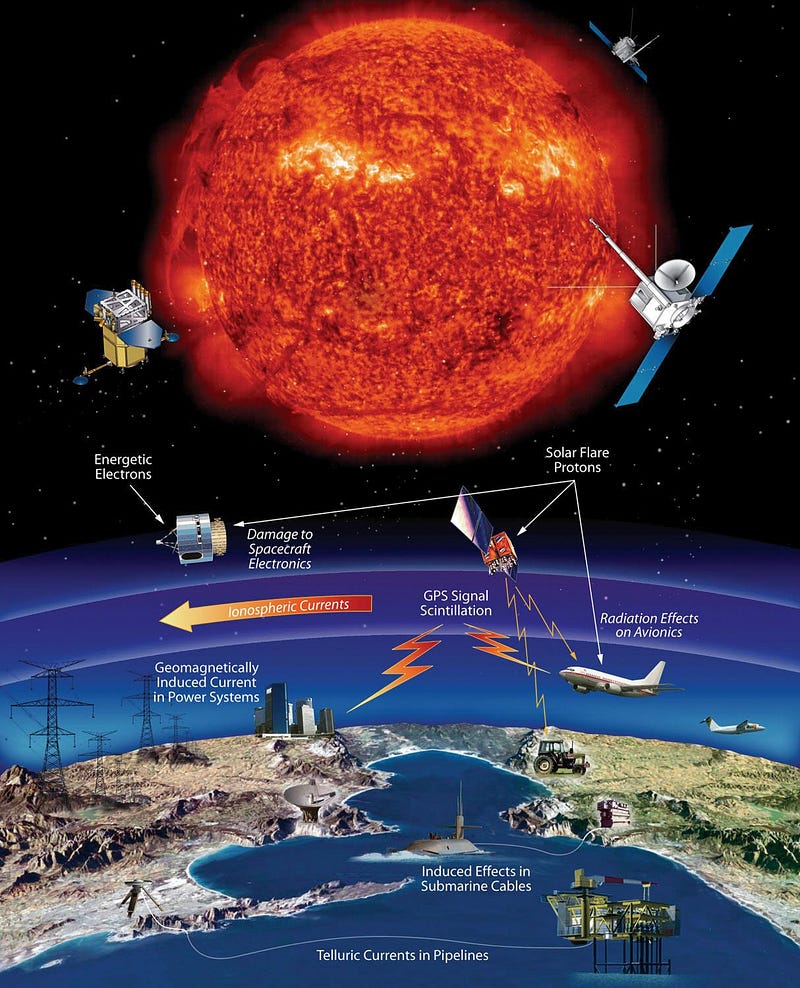Throwback Thursday: The Truth About Solar Storms
And what they mean for humans here on Earth.
“Concentrate all your thoughts upon the work at hand. The sun’s rays do not burn until brought to a focus.” –Alexander Graham Bell
Imagine a beautiful, clear day. The Sun is shining, the skies are clear, and you couldn’t ask for a nicer day.

All of a sudden, the Sun itself appears to brighten, just for a brief amount of time, like it released an extra burst of energy. That night, some 17 hours later, the most spectacular auroral display ever brightens the night in a way you never imagined.

Workers across the United States awaken at 1 AM, because the sky is as bright as the dawn. Aurorae illuminate the skies as far south as the caribbean, beneath the Tropic of Cancer. And long, electricity-carrying wires spark, start fires and even operate and send signals when there’s no electricity! This even includes, believe it or not, when they aren’t plugged in.

This isn’t a science-fiction scenario; this is history.
This is what a catastrophic Solar Storm looks like, and this actually occurred exactly as described in 1859.

The way this actually happens is that the Sun, rather than being this constant ball of nuclear fire in the sky, has an active surface, complete with an intricate magnetic structure, temperature variations, sunspots, and occasional flares and mass ejections.

For reasons we don’t completely understand, the Sun’s activity levels ebb and peak on an 11-year timescale known as the Solar Cycle, and the transition between last year and this year is anticipated to have been the peak of our current cycle. This means we’re more likely to see larger numbers of flares, as well as stronger-than-average flares, during both the past couple of years as well as the rest of this year.

Typically (but not always), these flares pose no danger to anything here on Earth, for a variety of reasons.
1.) Most solar flares are not directed anywhere near the Earth. Space is a big place, and even at our relatively close distance of 93 million miles (or 150 million km) from the Sun, that’s a long way away. Even though most sunspots occur near the solar equator, more than 95% of flares and ejections, when they occur, never impact our planet at all.
But sometimes, they do.

2.) Most flares are too small, too slow, and sub-optimally aligned to get past the Earth’s magnetic field. Our magnetic field is awesome! Sure, it might be less than 1 G (gauss) at the surface (or 0.0001 T — for Tesla — for you mks sticklers out there), barely enough to deflect your compass needles towards the magnetic poles. But the field extends far into space, and the matter ejected in a solar flare are almost exclusively charged particles, which typically move at speeds of only a million miles an hour.
These particles are bent by our magnetic field (as are all charged particles moving through a magnetic field) and will mostly be deflected away from the Earth. The ones that are bent into the Earth will crash into our upper atmosphere; this is the cause of nearly all auroral events.

3.) Our atmosphere is sufficiently thick to prevent these charged particles from irradiating us. Even if the flare moves quickly (or at about five million miles-per-hour), is huge (containing billions of tons of matter), and is aimed directly at us, the charged particles will never make it through our atmosphere, down to the surface. In fact, they peter out to practically nothing nearly 50 km above the Earth’s surface, far higher than any mountains or even that the heights airliners reach. Unless you’re in space (for some reason) at the time, you won’t receive any more radiation than you normally would, and there is no biological risk.
But there is one real risk, and it’s a consequence of our physical laws of electromagnetism.

A charged particle is bent as it moves through a magnetic field because of the connection between electricity and magnetism. But that same connection means that a change in electric currents — which are made by the motion of charged particles — create changing magnetic fields. And if you have a changing magnetic field either around a wire or through a loop or coil of wire, you will generate electric currents!
So while there may not be a danger to you, there is a huge danger to electronics, ranging from automobiles to transformers to — most frighteningly of all — the entire power grid! That’s the real danger of a solar storm: an event similar to the 1859 Carrington event could cause anywhere between an estimated $1-to-$2 trillion of property damage, mostly due to electrical fires.

With the space weather satellites we have up now, we would have about a half-day’s warning to shut down our power stations and voluntarily shut off the grid in the event of such a flare. These things can not be predicted, and neither can their interaction with the interplanetary-and-Earth’s magnetic field, so you must never listen to fear-mongers who tell you a catastrophic solar flare is imminent; we can only be prepared to react when one is detected.
Ideally, we’d be able to either upgrade the grid or to simply install a sufficient amount of electrical grounding, but practically, the first option is a long-term project that no one is working on, and the second one is continuously thwarted by thievery of copper wire.

People will risk their lives — and many lose them to electrocution in the process — to steal the one thing that could protect them from power surges. But does that mean it’s time to go into panic mode?

Hardly. There’s no need to be afraid of these things, but you do need to be prepared. If an ultra-massive, fast-moving coronal mass ejection ever heads directly towards Earth, you are literally taking your life into your hands if you do not shut down and unplug all of your electronic devices — and your power companies deliberately black out your neighborhood — until the storm passes. Long-distance wires, power stations and substations and the major components of the electrical grid itself will be at the greatest risk, as they will have huge direct currents (in systems designed only to carry AC) induced in them. The smartest move for those components, quite honestly, might be to sever the wires.
That’s the only surefire way we have of personally safely dealing with things now. But you should also keep in mind that these are once-in-a-century events, and only every five centuries (on average) do we get an event like we did in 1859. So be aware, be informed, and know how to deal with it if it happens, but don’t lose any sleep over it! Instead, your best bet is — when applicable — to go outside and enjoy the auroral show!

And if the “catastrophic” flare happens, be smart, and let others know — calmly and rationally — what they should do to protect themselves and their property. It’s nothing to be afraid of as long as you know what to do!
This article was prompted by Thor Viðar Jónsson, who alerted me to this two year old story making the rounds. If you have something to add, leave your comments at the Starts With A Bang forum here!





